North American XB-70 Valkyrie USAF Model
Production Time 9 to 10 weeks
Shipment is by FedEx, UPS or DHL International Express Courier with a normal door-to-door delivery time worldwide of within 2-3 business days after dispatch. Due to the current volatility of world fuel prices, the amount mentioned here is our best estimate for DHL and UPS and may be subject to change at the time of shipping.

Product statistics
Length: 17 Inches (43.2 Centimeters)Wingspan: 9.6 Inches (24.4 Centimeters)
Height: 2.8 Inches (7.1 Centimeters)
Scale: 1:131
$239.50
Manufacturer: North American
Production Time 9 to 10 weeks
-
United States dollar ($)
-
Pound sterling (£)
-
Euro (€)
-
Australian dollar ($)
-
Canadian dollar ($)
-
Singapore dollar ($)
-
Swiss franc (CHF)
-
Japanese yen (¥)
-
Danish krone (kr.)
-
Hong Kong dollar ($)
-
Norwegian krone (kr)
-
Swedish krona (kr)
General Product Description
Our ReplicaHangar North American XB-70 Valkyrie USAF Model exhibits unique, unrivaled quality and detailed design to come as close as possible to the accuracy of the actual plane. It comes as standard with a robust, durable base or stand which is available in a variety of different finishes designed to match your own personal requirements including solid wood, wood with polished metal supports or adjustable wood wall mount and will be ready within about 9-10 weeks from placement of order.
The North American XB-70 Valkyrie USAF Model is made of the finest kiln dried renewable mahogany wood (commonly known as Lauan or Meranti) which has undergone many stages of carving and meticulous and careful sanding giving the beautiful, finished museum quality masterpiece. Many collectors and model connoisseurs demonstrate their preference for genuine handmade and hand painted mahogany wood models rather than plastic or die cast (diecast) alternatives due to the overall look and totally different feel of the item - we trust you will find the same. We can however, if required produce the same model in Solid Cast Resin so just click and contact us for further information. Our craftsmen and gifted artisans ensure that our finely handcrafted model airplanes match the precise blueprint details of the original aircraft. The paint scheme, markings and parts are closely matched, reflecting the original aircraft. This stylish top-quality desktop replica model will surely enthrall anyone who receives this as a gift and for sure one of the most appropriate and desirably collectable gifts for any aviation enthusiast or avid military jet aircraft collector whilst also displaying a perfect resemblance to the actual real life version.
There are many types of military jet aircraft, but the basic types are bombers, fighters, fighter bombers, spotter planes, transporters, patrol aircraft, trainers, and reconnaissance and observation aircraft. All these types of aircraft are used for different types of missions. If you're a fan of historic or present-day military aviation, our model aircraft will bring the excitement and character of these aircraft right into your own home.
If you require, we can also make the North American XB-70 Valkyrie USAF Model in any other military, government or even private livery or colour scheme you require and if necessary, in a different size or scale. Just click here to contact us with a description or photographs of what you require, and we will let you have a quotation for the necessary customization by return email. We can also make bespoke scale replicas of any other private / civil commercial airliner or airliners, helicopter, glider, gliders with engines, military propeller, warplane jets, biplane, triplane, tail fin, spacecraft, rocket or NASA model you require in any airline, military or civilian livery or colors. We also produce model airships, blimps, dirigibles, blimps, boats, and ship collectibles. Wall plaque or seal for military, government or private customers. Again, by clicking here to contact us just let us know exactly what you need.
The North American XB-70 Valkyrie was conceived for the Strategic Air Command in the 1950s as a high-altitude bomber that could fly three times the speed of sound (Mach 3). Two aircraft were built and flew test flights in the 1960s..
The Valkyrie was configured as a canard delta wing, built largely of stainless steel honeycomb sandwich panels and titanium. It was designed to make use of a phenomenon called compression lift, achieved when the shock wave generated by the airplane flying at supersonic speeds supports part of the airplanes weight. Compression lift remains, to this day, a controversial theory as applied to the XB-70 and it is the only airplane of its size to ever feature drooping wingtips. For improved stability at supersonic speeds, the Valkyrie could droop its wingtips as much as 65 degrees..
Drooping the wingtips also strengthened the compression lift effectmdash; with the wingtips drooped downwards, the shock wave caused by the compression wedge at the center of the wing would be further trapped under the wings, rather than simply flowing out past the end of the wings. There is a popular belief that this helps the XB-70 have the highest lift-to-drag ratio on a manned aircraft. While it does improve the performance, the ratio still is not as high as on most sailplanes..
The intended role of the aircraft was to be a high-altitude supersonic bomber, to be escorted by the XF-108 Rapier, a proposed supersonic fighter which was developed by North American Aviation in parallel with the XB-70. The Rapier was also intended as a defensive aircraft to counter an anticipated Russian bomber with capabilities similar to the XB-70. As a cost saving measure, the engines and many subsystems were engineered to be common between the two aircraft. Following the downing of the U-2 flown by Gary Powers, the viability of the XB-70 as a bomber was questioned, and the program was changed to a research program for the advanced study of aerodynamics, propulsion, and other subjects related to large supersonic aircraft. Initial plans were made to build 3 aircraft, each one incorporating modifications based on lessons learned from the previous aircrafts flight tests, but the program was cut down to two aircraft in July 1964..
The first XB-70 made its maiden flight on September 21, 1964. The first aircraft would be found to suffer from weaknesses in the honeycomb construction, primarily due to inexperience with fabrication of this new material. Construction of the honeycombed panels was much more difficult than anticipated by the designers. The first aircraft was also continually troubled by hydraulic leaks, fuel leaks, and problems with the aircrafts unusually complicated landing gear. In flight on May 7th, 1965, the divider separating the left and right halves of the engine inlet broke off and was ingested into the engines, damaging all six beyond repair. On October 14, 1965, on the first flight exceeding a speed of Mach 3, the stress again damaged the honeycomb construction, leaving two feet (600 mm) of the leading edge of the left wing missing. These construction problems resulted in the imposition of a speed limit of Mach 2.5 on the first aircraft..
These honeycomb construction deficiencies were almost completely solved on the second aircraft, which first flew on July 17, 1965. On May 19th, 1966 aircraft number two flew 2,400 miles (3,840 km) in 91 minutes, attaining Mach 3 for 33 minutes of that flight. On June 8, 1966, however, it crashed following a mid-air collision with an F-104 that occurred while the aircraft were flying in close formation for an ill-conceived photo shoot at the behest of General Electric. NASA Chief Test Pilot Joe Walker, piloting the F-104, and Carl Cross, copilot aboard the XB-70, were both killed in the crash, while Al White, the XB-70s pilot, successfully ejected. The exact cause of the collision is still debated. There are many different factors that can lead to such a crash, some of these being pilot failure and mechanical failure..
The first aircraft with its limited abilities continued research, making 33 more research flights. On February 4, 1969, Valkyrie number one was retired and flown to the National Museum of the United States Air Force at Wright-Patterson Air Force Base near Dayton, Ohio..
It is a popular misconception that the XB-70 caused so much concern in the Soviet Union that a special fighter aircraft design program was created to counter it, the MiG-25. In reality, this was a cover for the MiGs true purpose as a countermeasure to the SR-71, which was still highly classified at the time..
The Soviet Sukhoi T-4 was a medium-range bomber/missile carrier prototype built in response to the XB-70..
| Weight | 6 kg |
|---|---|
| Dimensions | 17 × 9.6 × 2.8 in |
Be the first to review “North American XB-70 Valkyrie USAF Model” Cancel reply
Related products
Military Airplanes - Jet
McDonnell Douglas CF-188B (CF-18B) Royal Canadian Air Force 188901 Model
Military Airplanes - Jet
Military Airplanes - Jet
Military Airplanes - Jet
Military Airplanes - Jet
Military Airplanes - Jet
Military Airplanes - Jet
Military Airplanes - Jet

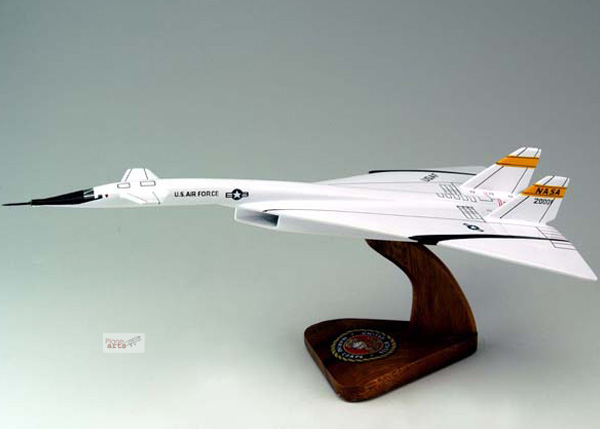
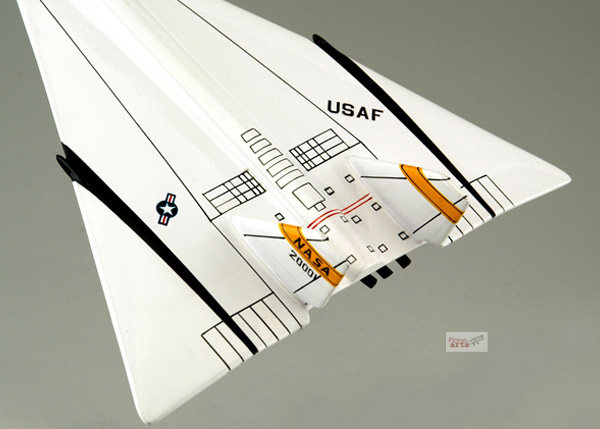
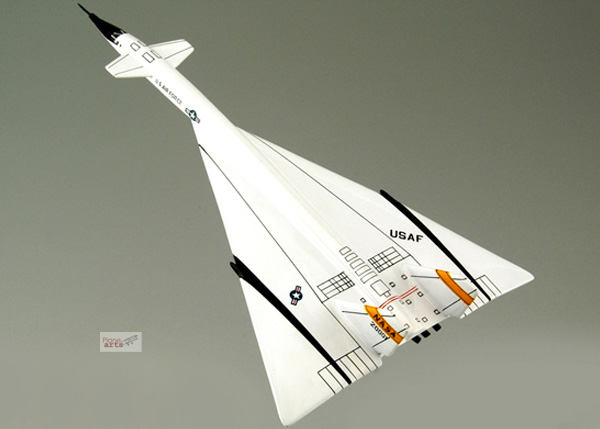

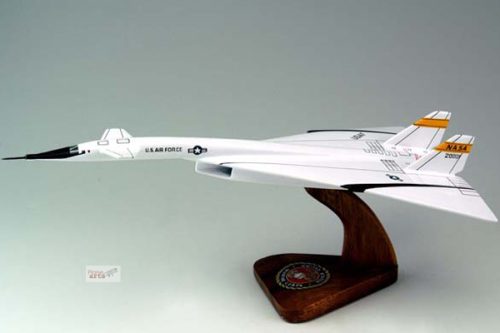
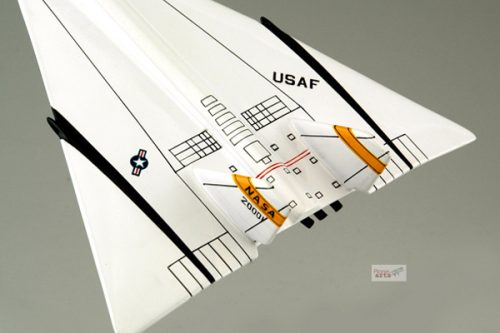

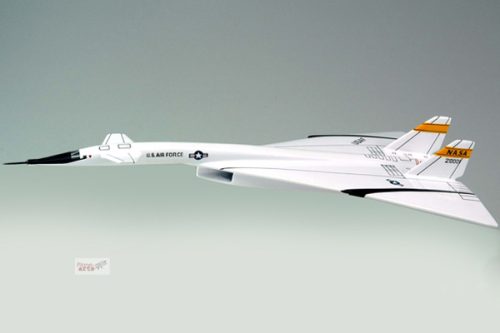
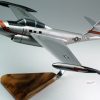

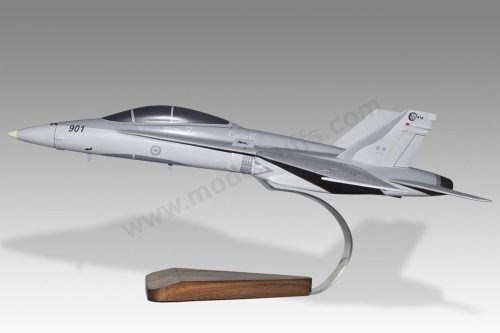

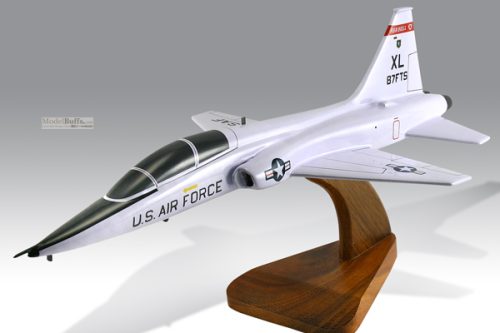

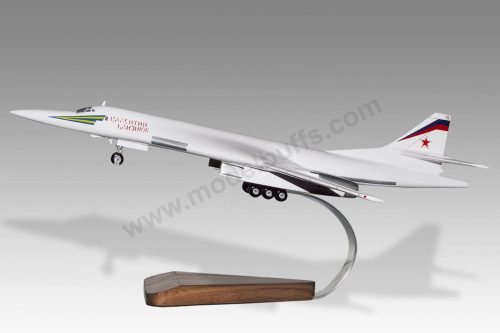
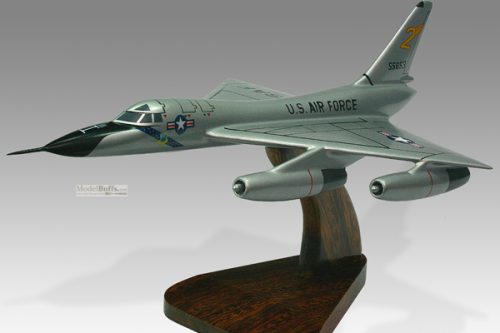
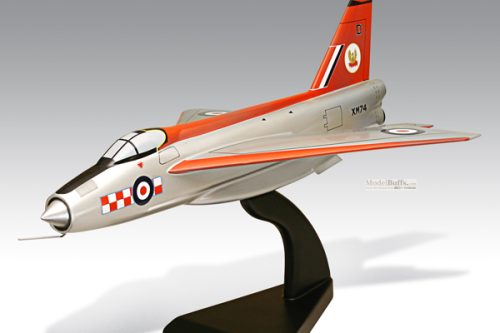
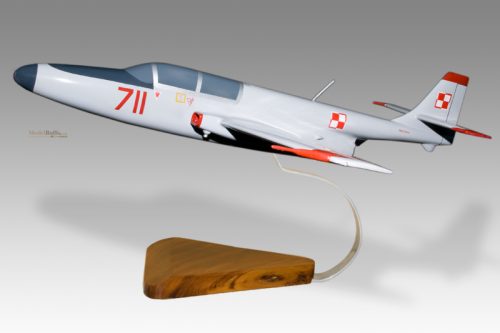
Reviews
There are no reviews yet.